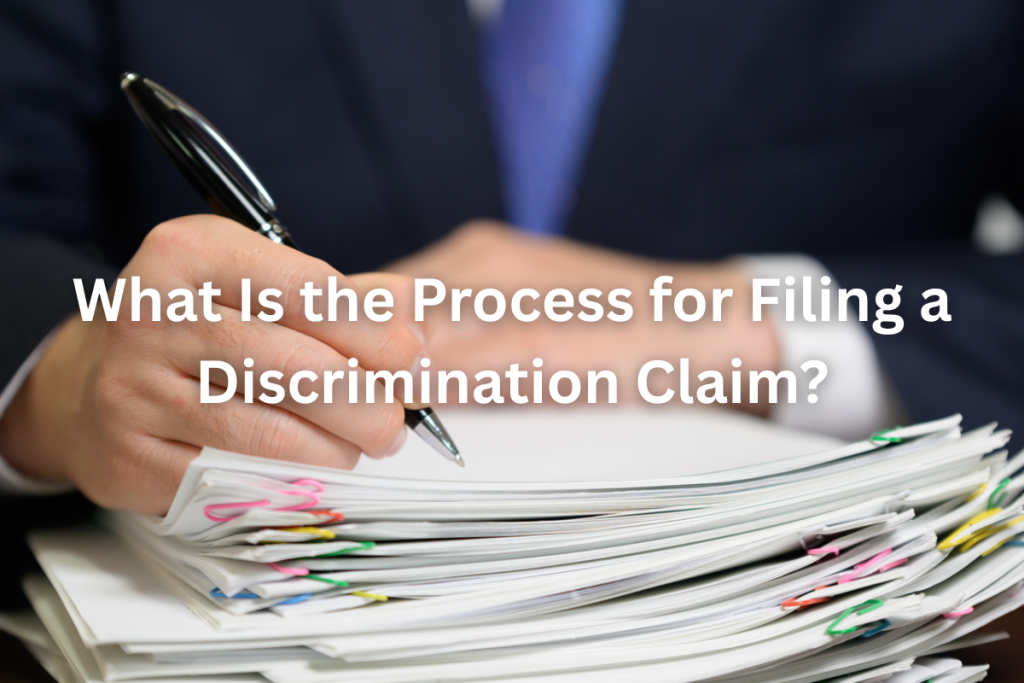Filing a discrimination claim may feel overwhelming, but breaking the process into steps can make it clearer and less intimidating. Whether you’re still employed or no longer with the company, knowing how to proceed is key to protecting your rights. Understanding the timeline and requirements is especially important because strict filing deadlines apply, and missing them could prevent you from pursuing your case.

Step 1: Internal Reporting
Reporting discrimination internally—to Human Resources, a supervisor, or another designated contact—can help build a record that the employer was made aware of the problem. If you skip this step, employers may argue they never had a chance to correct the issue. Even a simple email describing what happened and asking for action could suffice. In some companies, internal reporting is also a necessary step under company policies.
Step 2: File a Charge with the EEOC or CRD
To pursue a discrimination claim under federal or California law, you must file with an enforcement agency. Filing internally with your company does not stop the statute of limitations clock.
- EEOC: The deadline for filing depends on several factors including the type of employer and the type of claim.
- CRD: Under the California Civil Rights Department, employees have up to three years from the date of the violation to file a complaint.
Filing with one agency usually means your complaint is “dual-filed” with the other, so you do not have to submit separately to both. The key is to act promptly, because waiting too long may forfeit your legal rights.
Step 3: Agency Investigation
Once your complaint is filed, the agency may begin investigating. This process often includes requesting documents from your employer, interviewing witnesses, and reviewing employment policies or records. In some cases, the EEOC or CRD may suggest mediation, which allows both sides to discuss resolution with the help of a neutral third party. While mediation is voluntary, many cases settle at this stage, saving employees and employers the time and cost of further litigation. Investigations may take several months to over a year, depending on the complexity of the case and the agency’s caseload.
Step 4: Right-to-Sue Letter
If the agency does not resolve your case or determines it cannot move forward, it will issue a Right-to-Sue letter. This is a critical document. It gives you the legal right to pursue your claim in court. Some employees choose to request an early Right-to-Sue letter if they prefer to move their case directly into court rather than wait for the agency’s investigation.
Step 5: Filing a Lawsuit
If you proceed to court, your case moves into the litigation phase. This process involves several key steps:
- Discovery: Both sides exchange evidence, take depositions, and gather testimony to build their cases. This is often the longest part of litigation, sometimes lasting years.
- Motions: Lawyers may file motions, which are requests to the court to take certain actions such as ordering a party to produce evidence.
- Settlement Talks: Many cases resolve before trial, often during discovery or just before a trial date.
- Trial: If no settlement is reached, the case goes before a judge or jury who will decide the outcome. Trials are less common—over 90% of employment cases settle before reaching this stage. However, trials are an important tool for holding employers accountable when settlement is not possible.
Taking the Next Step Toward Protecting Your Rights
The process of filing a discrimination claim is complex, with overlapping federal and state laws, strict filing deadlines, and procedural rules. Missing a deadline or failing to follow the proper process can mean losing your right to bring a case, even if discrimination occurred. An experienced attorney can guide you through each stage, help preserve important evidence, and advocate for you at critical points in the process. If your case moves to court, your lawyer ensures you are fully represented from discovery through trial.
At Lawless, Lawless & McGrath, we guide San Francisco employees through every step of this process. For decades, we’ve helped workers file complaints, negotiate settlements, and take cases to trial when necessary. Many of our clients feel relieved knowing they don’t have to navigate complex deadlines or confront their employers alone. With experienced legal representation, you can focus on your career and your future while we guide the legal fight for your rights.
